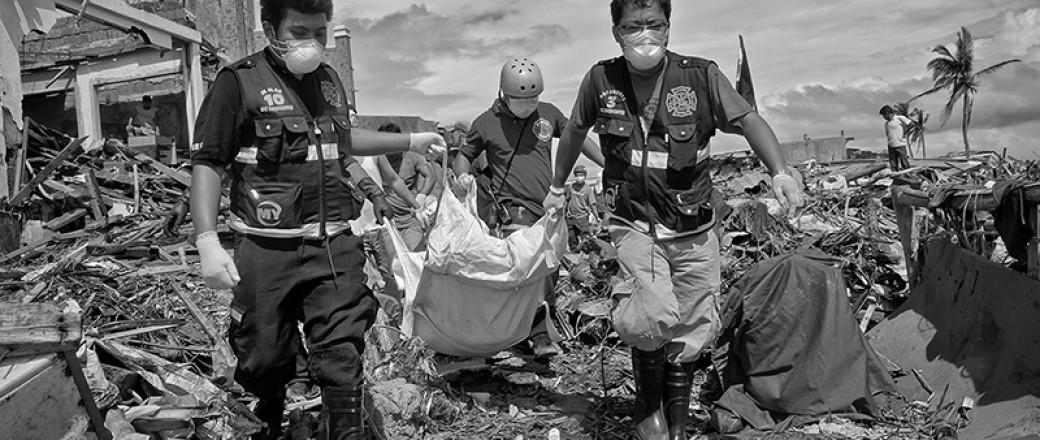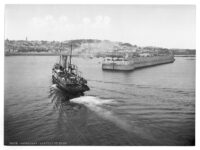1. How and when did you become interested in photography?
It all came from my mother, she was a very good photographer herself and when I was a little kid I remember that one day she made me jump high into the air with my skateboard and she shot a frame which became an award winning one at a contest.
2. Is there any artist/photographer who inspired your art?
Definitely, not only photographers , but painters as well, I used to go to the Prado museum in Madrid or to the Hermitage museum while I lived in Russia only to study the light while looking at some paintings. As for photographers my first model to follow was Cartier Bresson and later James Nachtwey. At the present I believe there are many interesting photographers from whom you can get inspired, one of them is my sister Carolina, who is also an award winning photographer.
3. What has been your favourite photo location?
Every place can have some charm, but I must say St Petesburg in Russia, West China, Rajasthan or Uttar Pradesh in India are among my favorite.
4. Why do you work in black and white rather than color?
Hard to answer. I believe the essence of photography is black and white, there is something to it that looks extremely artistic and genuine and it also changes the way you look at things ,however I think that a good photographer needs to train his brain in order to be able to see both black and white and color, there are amazing photographers in both modalities.
For many years I worked using Russian Zorki cameras from the 40’s using a very interesting black and white film named “Sveta” (which means light in Russian) which was made in Ukraine, and there was a hauntingly and- one may say- uncanny beauty to the each frame shot I took during the Russian winter and for which that film helped in some way.
5. How much preparation do you put into taking a photograph/series of photographs?
Much of my technique is precisely the “no technique”, the type of images I work with require a rapid reaction, so you don’t have very much time to think. Its maybe an interiorized behavior and it comes out automatically, like that of a martial artist who has been training for years and doesn’t need any more to think about his moves.
On the other side I do use a lot of “predictive behavior” to call it some way, and that means that when I visualize a situation I try to zoom in and out mentally to foresee the tight shots and the far away shots, and if there is action I try to predict were the people are going to or what is going to happen next, which allows me to foresee the position I should be at before the situation has actually happened.
Many times I work using manual focus, so I need to focus beforehand the place where I think the action is going to take place and wait for it to happen.
To put an example; if I am at a high risk situation ,not only do I need to shoot the frames , but to know where am I going to be next, or how the people are going to react, or what might be the outcome of the situation, you just can’t follow blindly with your camera, that can get you into real trouble.
One other thing is that my photography requires as well to be in good physical shape, so I need to train every day.
6. What future plans do you have? What projects would you like to accomplish?
At the present year I have been awarded a second place and a third place at the annual IPA 2015 awards, a Silver and Bronze medal at the Prix de Paris 2015 awards , became finalist in the portrait and photojournalism category at the Fine Art Photography awards , finalist at the Siena Photography awards and received over 14 honorable mentions at different international awards, and the majority of this awards had to do with photographic series belonging to long term projects, so some people want me very much to go on with those projects, but I think it is time to make a move, maybe to Africa or to continue in Asia, where I am right now and start with the conceptions I have in mind.
My projects have to do with the environmental and humanitarian issues and because they are usually long term, I do tend to research as much as possible before engaging into one, because it is important to think about the outcome, about what would happen for example within one year and if it will still be possible to work on the same subject.
Website: www.ununicoplaneta.com/-/ununicoplaneta
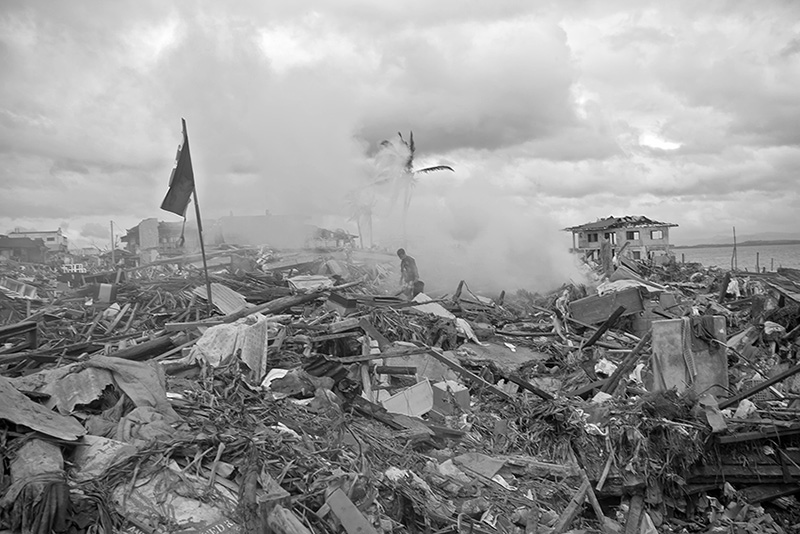
After the typhoon; the impact of the devastation had been so strong that the people wandered about trying to comfort each other like lost souls. Since they had no water food or shelter; they also didnt have time to mourn the dead or to search for their bodies; everything had turned into a matter of desperate survival. By keeping themselves continously busy; the survivors didnt allow themselves to think; and grouped in small teams to make shelters from the rain; gather dirty water; tried to find canned food or made fires to roast the dead fish they had found. Since many fishing boats had been destroyed they couldnt fish; so finally many proceeded to loot the small shops and supermarkets. A great part of the Magallanes street had been a slum area; so the wind completely tore up the homes made of wood; metal and plastic; and sent huge and dangerous pieces of debris flying into the air. The whole street of Magallanes had turned into a huge pile of debris; and the stench of hundreds of bodies trapped under the debris; made it easy to recognize it as one of the streets with the highest number of casualties in Tacloban. © Javier Sanchez-Monge Escardo

A heavily armed Philippino soldier looks at my camera after an attempt to detain some looters.
I was walking through a side road close to the street of Magallanes, when all of a sudden we heard some women screaming that the remainings of their homes were being ransacked. A heavily armed military team rushed to the area , and despite their warnings that it could be quite dangerous to follow them since the looters could be armed and there was a most probable risk of confrontation, I run behind the team. We climbed over a pile of debris to see two groups of youngsters about to engage in a violent confrontation, so the military police pointed their arms at them and sorrounded them. Apparently, it all had started when a young girl had tried to gather some scattered dvds that belonged to a deceased person, and a member of the family of the deceased had tried to attack her exclaiming that the girl had been going in and out of a hole between the debris where the home of the victim had been before. The confrontation attracted many relatives and young friends of both families, and had it not been because of the military police intervention it could have escalated into a violent outburst.
Since the policy of the Philippines Government regarding people who looted small items mainly for survival had been that one of a very understandable forgiveness, there were no detainees, although some of the teenagers had tried to steal more valuable items.
Right after the typhoon ,gangs of people wandered about in panic like zombies and since they lacked water and food ,they engaged in looting and very soon there was a huge mob trying to ransack homes and stores, the same mob that went into the Robinsons supermarket and stole all kinds of items, including televisions, computers and washing machines. © Javier Sanchez-Monge Escardo
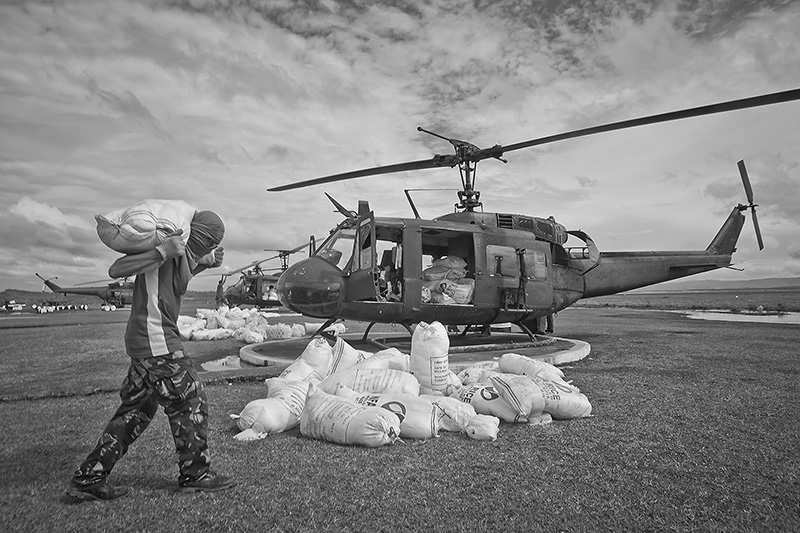
After the typhoon nothing was left from the original airport of Tacloban.
Due to the devastation, all the commercial flights were banned to go to the area, and in their place only the military flights were allowed to fly in and out, engaged into the rescue operations. I boarded onto a military plane Malaysian airplane from the military base of Cebu city along with two other Asian photojournalists and members of different rescue teams and when we arrived, we were left there to find our own means of survival. After some people volunteered to share their tent with me, I was able to witness two food helicopter deliveries on behalf of the US army and the Philippines army. Their logistics was well organized and both armies had marked on a map all the disaster areas giving priority to the most affected ones. At first, groups of soldiers engaged into bringing sacks of rice and boxes of humanitarian aid and piling it close to the helicopters waiting to load it inside before departure, a very exhausting task due to the high number of helicopters arriving and departing. The soldiers endlessly repeated this task throughout the morning, and the pilots engaged into repeated flights. Usually the aircrew consisted of three or four people including the pilot, and they alone were supposed to deliver the heavy load to the different areas, which was also particularly exhausting. The whole task was quite dangerous provided that they were frequently dealing with desperate mobs that were receiving assistance for the first time, and when they saw the helicopter flying over them with the intention of finding a landing spot, they would run towards it as fast as they could , as they knew that the first ones to arrive could be the first ones to own the deliveries. However, the delivery system employed by the Philippines and the US army was different. © Javier Sanchez-Monge Escardo
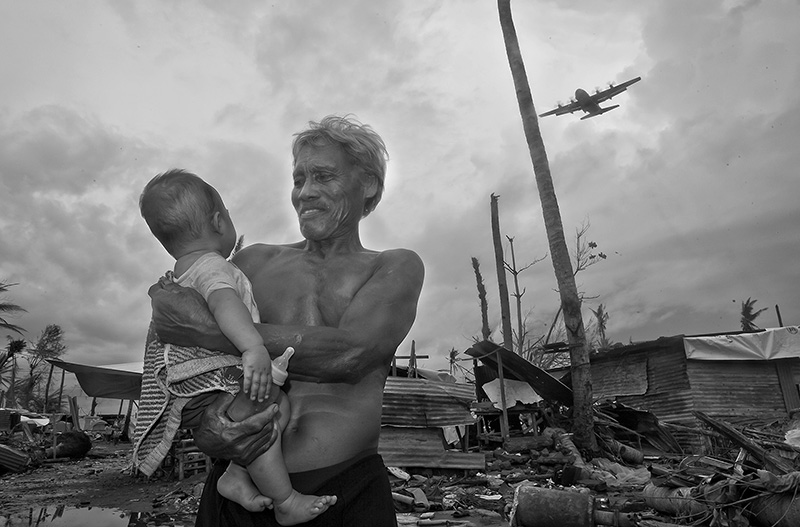
This image shows the quite happy moment in which the rescue planes started to arrive, delivering humanitarian aid sometimes parachuted from the air and beginning to displace the survivors from Tacloban to Cebu City or to Manila. Remaining as the only two survivors of a family, a grandfather had remained very attached to his granddaughter protecting her throughout the ordeal and as a result of the humanitarian aid he had been able to feed her with some powder milk. Despite that the grandfather had been affected by some minor scratches, the health of both of them was stable.
One of the most shocking experiences to observe during the aftermath of the typhoon, was the reaction of the people. Many of them , instead of showing any signs of distress, quite on the opposite they smiled when approached and even laughed when asked about their fate. As I was informed later , that was a way of coping with Post Traumatic Stress Disorder. The magnitude of their losses was so overwhelming that it was just more than a normal human being could bear, so instead of dealing with their sadness at that point they joined other people and tried to keep themselves busy either by cleaning the debris or constructing small in which to live in the short run. As one of the mental health doctors helping them told me, the realistic dimensions of their loss would come to haunt them later, but for the moment it was simply too much. At some places the children played cheerfully between themselves oblivious to many near cadavers, some of them could have probably been someone from their families. © Javier Sanchez-Monge Escardo
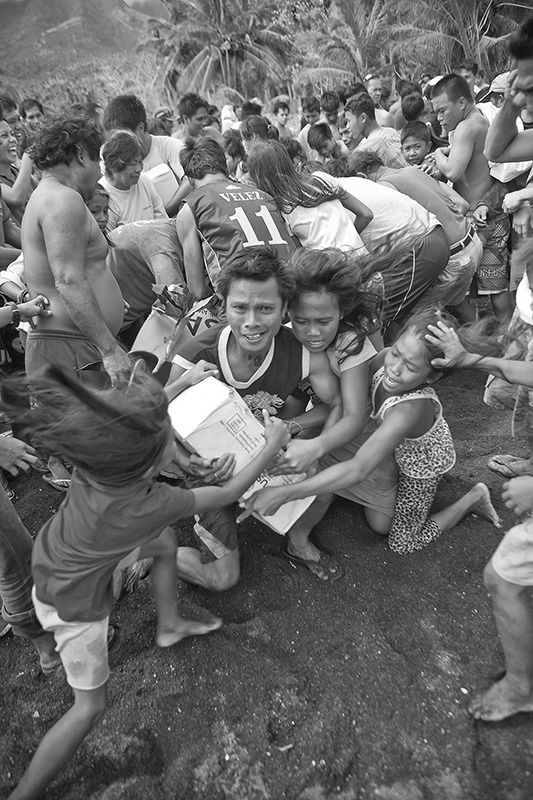
As soon as the helicopter landed, the pilots were forced to follow a very strict security protocol. At first, one of the three pilots got off the helicopter and running towards the mob raised his hands to make them halt or move slower, and then he deposited a long line of plastic tape on the ground in order to mark the limits which the people were not supposed to trespass and where the relief food was going to be deposited. Of course this was easily said, but the reality was quite another; some of the people carried knives or batons and they were very excited and ready to bludgeon each other over food which meant their survival and that of their beloved ones. The people were ready to do anything to get hold on the food,and the protocol wasnt always being followed. Although they screamed their thanks to the pilots and smiled at them, the pilots also knew that if they didnt unload the food fast enough, the helicopter run the risk of being assaulted, so they had to hurry in a superhuman effort and communicating between themselves through a signal language (the helicopter sound is so loud that it is almost impossible to hear he human voice) both to direct the operation and to warn on any emergency situations, they proceeded to unload all the heavy packages of humanitarian aid.
In order to prevent an assault to the helicopter, one pilot remained in the cabin ready for take off.
As the load was being deposited on ground next to the tape, the crowd grew bigger and bigger and the bigger it grew , the more it seemed it was about to lose control, so the pilots, aware of that told me to rush into the helicopter and while we were taking off an extremely violent fight over the goods started to take place.The last pilot onboard even had some time before takeoff to shake hands with some of the people who felt extremely grateful towards them.
Once we took off onboard of the helicopter the pilots started breathing oxygen from an onboard oxygen supply to avoid exhaustion. © Javier Sanchez-Monge Escardo

The amount of casualties left behind the typhoon Haiyan will never be known. When the hope for recovering survivors was almost none, many rescue teams arriving from different nations realized that they had to concentrate into recovering all the corpses they could find as soon as possible in order to prevent the spread of epidemics. Many of the teams such as the Korean Rescue Team proved to be extremely experienced and carried all the tools required for the search, which meant excavating, cutting into the debris with chainsaws, a very big amount of body bags and a fast and coherent interaction which whatever obstacles they found.
The majority of the rescue teams possessed rescue dogs, which were both trained for finding survivors as the main priority and corpses as second. When the search for corpses was heavily implemented, the rescue units followed the dog until it stopped on a pile of debris which hid some human remains; if the operation seemed too complicated due to the amount of debris covering the body, the team would automatically switch onto the search of another body.
The chances of finding abundant human remains were very high at the very populated slum areas, in which the poor constructions had been devastated by the wind and the uprising of the waters. Most of the bodies were brought to huge mass graves in the outskirts of Tacloban to be buried as soon as the circumstances allowed. There was even an attempt on the part of the forensic team –whenever it was possible- to gather evidence to identify the human remains, and the forensic team worked endlessly both day and night for that purpose. Many other times it was an impossible effort. © Javier Sanchez-Monge Escardo
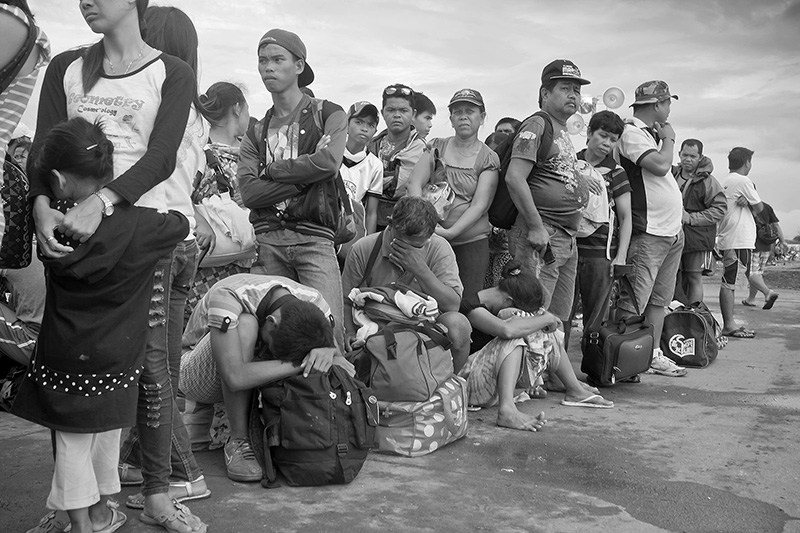
After having waited for days and nights at the devastated airport of Tacloban to be able to get into the flight list destined to an evacuee center in Manila, all the evacuees show deep signs of exhaustion,desperation and disbelief. They had lost part of their families, their homes, their jobs,and the possibility of going to a far away evacuation center offered no future, it became alike living as like a a refugee in their own country, so thats why many others chose to stay and have their homes rebuilt out of pieces of debris rather than evacuating to Manila.
Having lived a few nights inside a camping tent at the remainings of the Tacloban airport, I witnessed a living hell; at night it never stopped raining, and even inside the tents everything got totally soaked. The wind never stopped blowing and mixed with the sounds of helicopters and rescue or relief airplanes,it made sleeping an impossible ordeal. Unbelievable enough, the evacuees had to stay waiting outdoors without any type of shelter for many days and nights. Many of them were children, babies, old people, women or people who had been wounded during the typhoon, and in order to not lose their turn in the cue they remained in line waiting, sleeping amongst each other, or on top of their suitcases, suffering in silence.
During the first days of the evacuation many organizations offered them water and food knowing that there were going to be on the news, but when the Tacloban disaster wasnt on the news as much, numerous organizations left the country leaving the evacuees again without food or water.
As for lack of shelter one night a baby died dehydrated, and the mother asked the people to bury her baby around the airport since she had other children and she didnt want to lose her place in the line.
From that day some camping tents were disposed for the evacuees. © Javier Sanchez-Monge Escardo
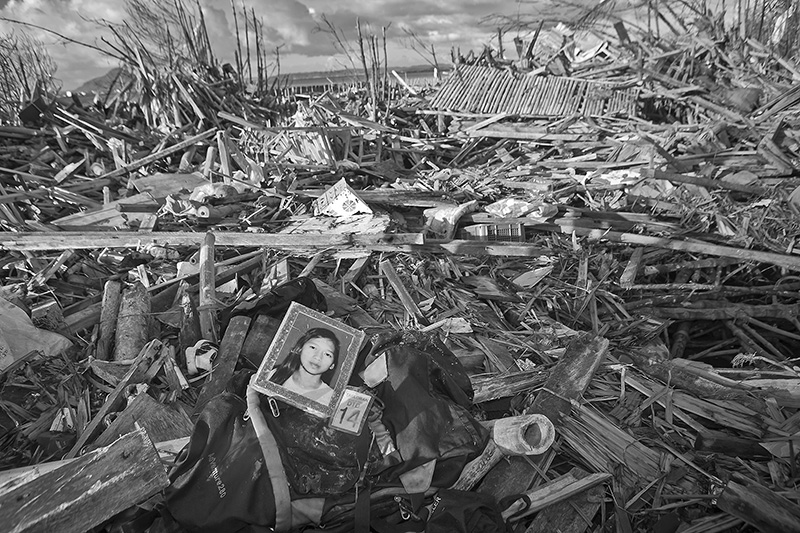
Perhaps one of the most difficult stages the body rescue teams had to deal with were when they searched through personal belongings and could relate those belongings to a close by corpse in and advanced state of decay. Whenever that happened that was a big drama, since it “humanized”the bodies -which at that point where far from recognizable- and it was hard to imagine the terrible fate that those human beings had to go through. Many times everyone hope they had made it into safety, such as this photo of a girl in the middle of one of the most devastated areas of Tacloban. It is unknown if she made it to safety or not. © Javier Sanchez-Monge Escardo
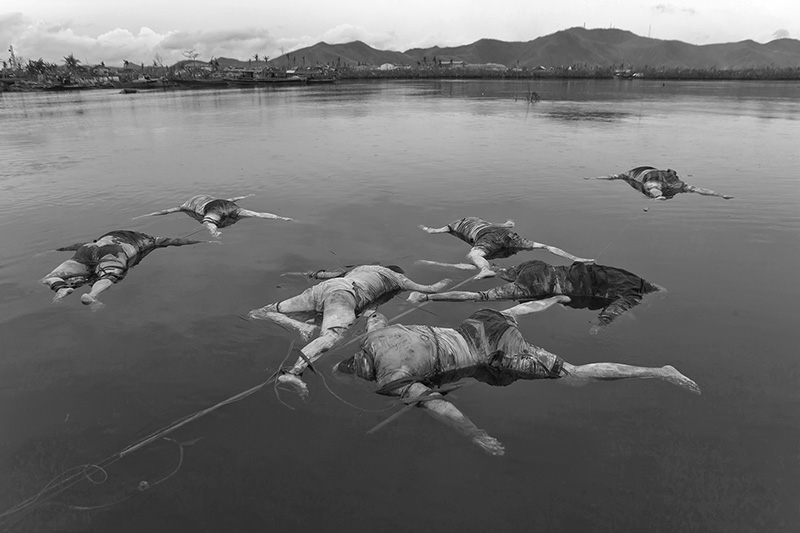
After the devastation created by the rise of the ocean levels, many people drowned at the area of San Jose (Tacloban City), which was one of the areas with most casualties.Improvised teams of fishermen volunteered to gather the corpses at the ocean and had them tied up together and secured by a rope tied to a stone laying at the bottom of the ocean, waiting for the body rescuers to come to pick them up and have them transported to mass graves. Most of them couldnt be recognized either because their relatives and friends were missing as well or because the bodies were beyond recognition. On the other hand the amount of casualties was so high that there was virtually no time for such a procedure (identifying the bodies by relatives or friends) and due to the high risk of spreading epidemics,the final decision was to have them immediately transported to mass graves, although an autopsy center gathered forensic data in an endless daily effort. That day it had been raining mildly and to an extent that there was a certain beauty , silence and calmness at the ocean, and the bodies floated motionless, as if it they had been deposited there on purpose, in an intermediate stage in between life and death and in communication with nature. I approached the bodies while standing on the top and mantaining the equilibrium on the thin canoe of two young fishermen and the sound of the drizzling rain and of their rowing paddles was the only sound to be heard. © Javier Sanchez-Monge Escardo

